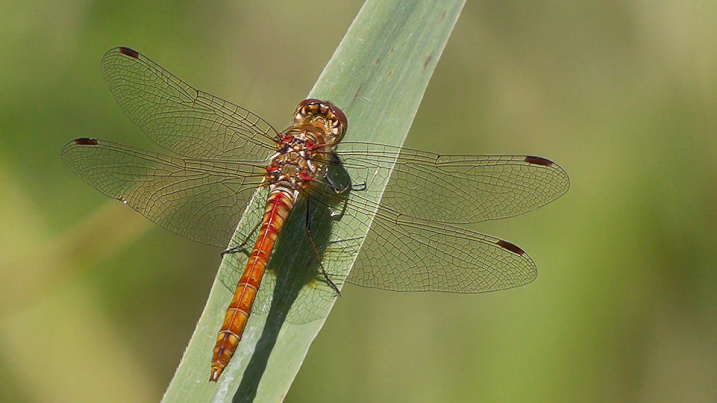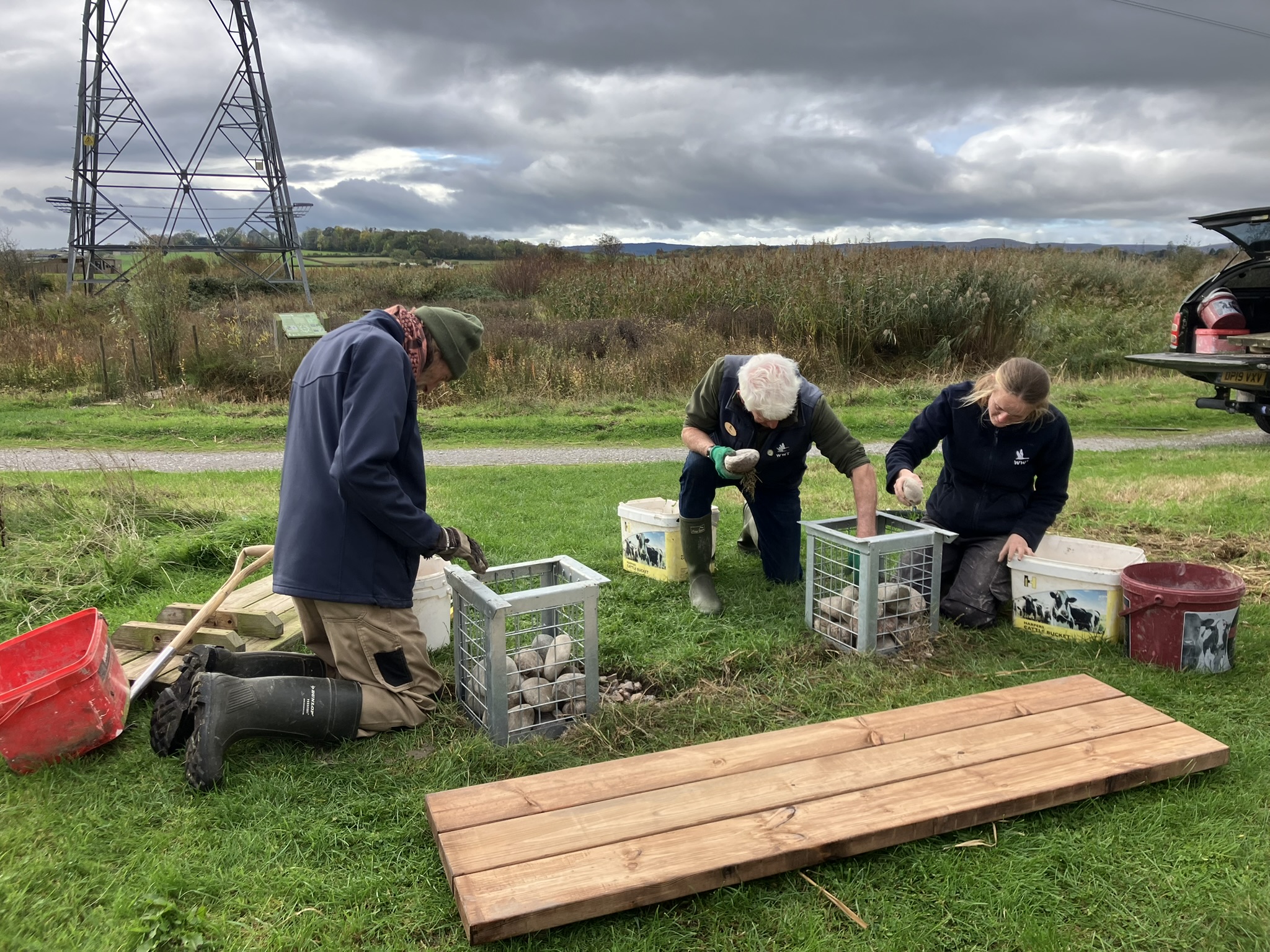Dragonflies at Steart Marshes
19 species of dragonflies and damselflies were found at Steart Marshes in 2018. This survey work has confirmed that the freshwater parts of the Reserve merit recognition as a Priority Site of Local Importance in Somerset for dragonflies.

In 2018 we contracted local ecology consultants Geckoella to undertake and devise a survey method for dragonflies and damselflies using the reserve. The aim of the research and survey was to assess the presence and activity of Odonata (dragonflies and damselflies) over the WWT Steart Marshes Reserve. With the land undergoing such a huge change and the number of water bodies significantly increased, together with the initial planting and dispersal of aquatic plants, we were interested to find out how the diversity and abundance had changed since completion in 2014.
The study was within the Wetland Walkway, Middle Brook, the pond network and South Brook freshwater ditches. Starting in May 2018, fixed transect routes were surveyed 4 times during the main flight months of the year. A total of 15 species were recorded, of which 6: Emerald, Red-eyed and Small Red-eyed Damselflies, Brown Hawker, Scarce Chaser and Ruddy Darter had not been recorded on the site before. The addition of four other species that have been recorded during 2014-2018 (Banded and Beautiful Demoiselles, Southern Hawker and Broad-bodied Chaser, brings the site total to 19 species.
 Broad-bodied Chaser
Broad-bodied Chaser
10 of the 15 species were recorded as using the site for breeding; a further 1 species was reported to have bred on the site during 2017.
At least 11 species have met the BDS abundance criteria for Priority Sites, including the Red Listed Scarce Chaser. This invaluable survey work has confirmed that the freshwater parts of the Reserve merit recognition as a Priority Site of Local Importance in Somerset for dragonflies. This is equivalent in wildlife value to that of a County Wildlife Site.
 Scarce Chaser
Scarce Chaser
It is very likely that future surveys will confirm the breeding status of Scarce Chaser, allowing the area to be upgraded to a Priority Site of National Importance. These surveys will be repeated yearly with the assistance of volunteers who were trained up and assisted with the 2018 survey, this will likely increase the species list for the site as well as the number of species breeding onsite.
It is believed that additional species that are both common and widespread in Somerset (e.g. Large Red Damselfly) could occur as breeding species or might wander to Steart (e.g. White-legged Damselfly, Red-veined Darter). This could easily increase the list to over 20 species, which is a good total for any wetland area in southern England. Fantastic news for a newly created wetland that is only 4 years into its development.



